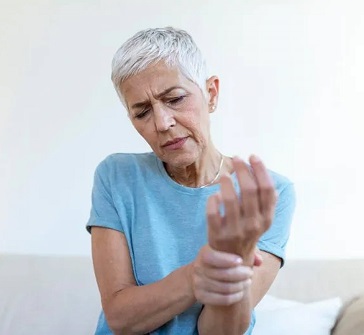 Book Appt.
Book Appt.
 Call Now
Call Now


Soft-tissue injuries encompass a wide range of injuries that affect the body's connective tissues, including muscles, tendons, ligaments, and fascia. These injuries can result from various causes such as trauma, overuse, or repetitive stress. Understanding the types, symptoms, diagnosis, and treatment options for soft-tissue injuries is crucial for effective management and recovery.
Types of Soft-Tissue Injuries:
Symptoms
Symptoms of soft-tissue injuries can vary depending on the specific injury, its severity, and the affected area. Common signs include:
Diagnosis
Accurate diagnosis of soft-tissue injuries is crucial for appropriate treatment. This often involves:
Treatment
The approach to treating soft-tissue injuries depends on the type and severity of the injury. Common treatment options include:
Recovery from soft-tissue injuries involves a progressive return to normal activities. Physical therapy plays a crucial role in rebuilding strength, flexibility, and function. Gradual reintroduction of activities, along with proper warm-up and stretching, helps prevent re-injury.
Prevention:
Taking precautions can help reduce the risk of soft-tissue injuries:
In conclusion, soft-tissue injuries encompass a range of conditions affecting connective tissues. Understanding their types, symptoms, diagnosis, and treatment options is crucial for effective management and recovery. Early intervention and appropriate care lead to better outcomes and a return to normal activities. Additionally, preventive measures play a vital role in reducing the risk of soft-tissue injuries in the first place.
SHALBY Sanar International Hospitals provides extensive medical procedures backed up with our state-of-the-art technology and a team of highly qualified & experienced clinical experts.



Life Transformed: Mr. Blojah Felix Journey to Pain-Free Living | SHALBY Sanar

Pain-Free Living After 6 Years: Knee Replacement Success Story | Dr. Rohit Lamba

Bilateral Total Knee Replacement by Dr. Vikram Shah | SHALBY Sanar International Hospitals

Remarkable Recovery Story: Hip Replacement for Non-union Fracture

Incredible Recovery Story: Bilateral Knee Replacement Transformation

Knee Replacement Surgery by Dr. Rohit Lamba: 60-Year-Old's Remarkable Recovery

Renewed Hope: Successful Hip Replacement Surgery Transforms Iraqi Patient's Life

Exploring a Case of Revision Knee Replacement: Insights from Dr. Rohit Lamba

Triumphant Journey: Ms. Fatima, 69, Triumphs Over Revision Knee Replacement Surgery

Leaving the crutches behind – Riyaz, 43, gains confidence after a successful Hip Replacement Surgery

Transformative Total Knee Replacement Surgery: A New Lease on Life for 48-Year-Old Ramesh

Miraculous Recovery: 17-Year-Old Kenyan Overcomes Osteosarcoma with Mega Prosthesis Surgery

Mr. Omar Faruk's Remarkable Knee Recovery: ACL Reconstruction Success Story

Mrs. Vijay Luxmi's Remarkable Knee Replacement Journey

Umidjon, 36, from Uzbekistan shares his gratitude for a successful total hip replacement surgery

Ms. Mohsin from Iraq shares her gratitude for a successful Computer Navigated Total Knee Replacement

A Total Hip Replacement surgery gives Ms. Barry from Ghana, the ability to walk again.

Dr. Rohit Lamba talks about a successful Hip Replacement Surgery carried out on an Iraqi patient
Our doctors pen down their research findings and experiences from time to time. Their words provide deep insight into the latest techniques, technologies and other advancements in healthcare. It provides expert answers to all kinds of health questions for real-life issues.
VIEW ALL.png)
.png)



Since the day of its foundation, SHALBY Sanar International Hospitals is committed to provide comprehensive healthcare services. It regularly organizes awareness programs in its premises and encourages outdoor healthcare activities and camps with an intent to put focus on preventive healthcare.
VIEW ALL